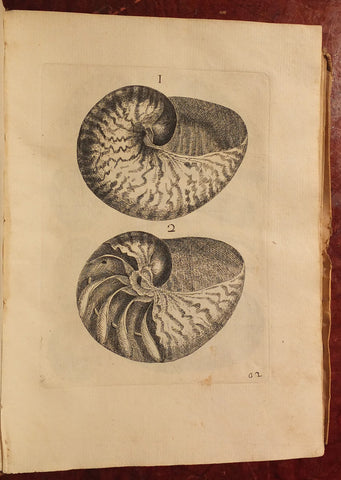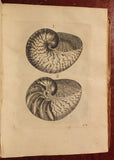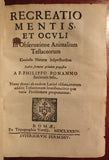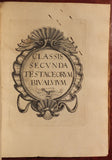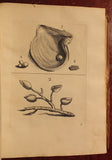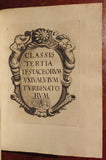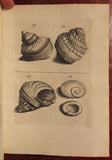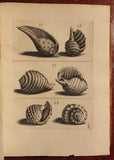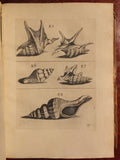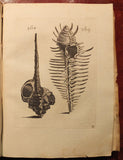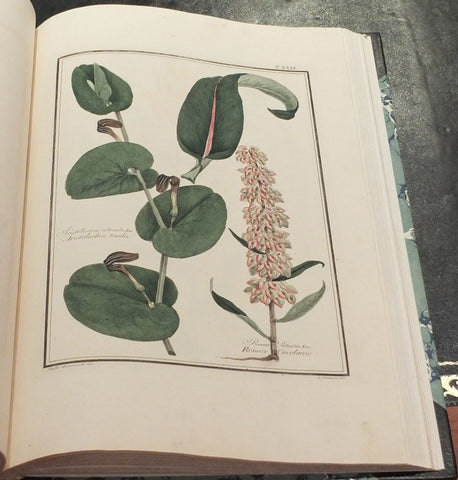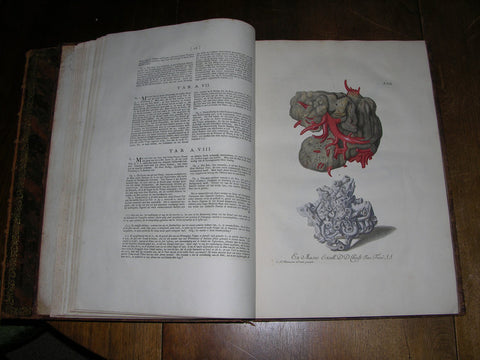Filippo Bonanni (1638-1725), Recreatio mentis et oculi in observatione animalium testaceorum.
Filippo Bonanni (1638-1725)
Recreatio mentis et oculi in observatione animalium testaceorum.
Rome: Ex Typographia Varesij, 1684.
4to., (8 6/8 x 6 1/8 inches). Additional engraved allegorical title-page, 3 sectional title-pages, and 132 engraved plates illustrated 532 specimens (the top margins of N2, N3 and O3 restored at an early date). Contemporary limp vellum with yapp fore-edges, the author and title in manuscript on the spine, remains of two pairs of leather ties (a little bit rumpled, and one or two stains).
Provenance: with the 19th-century inscription of the Societas Mariae Vicente Codina Vidal, of Xativa in Spain on a blank between the engraved title-page and the letterpress title-page
First Latin edition, first published in Rome in 1681 as Ricreatione dell' occhio e della mente nell' osservation' delle chiocciole, and an attractive example of the FIRST MONOGRAPH ON SHELLS, enlarged by the addition of a further one hundred shells.
Bonanni was a Jesuit and student of the celebrated Athanasius Kircher, and upon his death succeeded him as curator of the cabinet of curiosities at the Collegio Romano, publishing the catalogue of their collections as the Musaeum Kircherianum, Rome, 1709.
The Collegio Romano clearly provided the specimens for many of the engraved figures in this astonishing work, which caused Buonanni to be considered, along with Lister and Rumpf, one of the founding fathers of conchology.
Bonanni supported the theory of spontaneous generation basing his position on the scientific practice of using microscopes, and the systematic illustration of his observations. If Bonanni's system of classification has been superseded, the same is not true of his ilustrations. Cf. Peter Dance A History of Shell Collecting (Leiden: 1986) no.52 (and see pp.20-21); BM (NH) I, p.286; Nissen ZBI 754.
We Also Recommend

